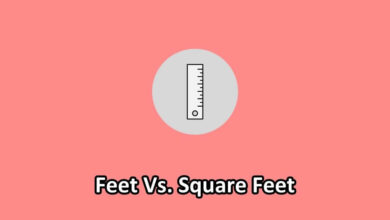Comparing T-test Vs ANOVA : Which One to Use When?
Are you struggling to choose between a t-test and ANOVA for your statistical analysis? Look no further! Both are commonly used in research studies but have different applications and assumptions. In this blog post, we’ll dive into the differences between these two popular methods and help you determine which one is best suited for your research question. So let’s first have a look at a table comparing both T-test vs ANOVA in a side-by-side manner.
T-Test Vs ANOVA (Comparison Table)
| T-Test | ANOVA |
|---|---|
| T-test is a type of statistical test that is used to compare the means of two groups. | ANOVA is a type of statistical test that is used to compare the means of three or more groups. |
| The t-test assumes that the two groups being compared have equal variances. | ANOVA does not make this assumption and can handle groups with unequal variances. |
| The t-test is a parametric test, which means it assumes that the data follow a specific distribution (usually the normal distribution). | ANOVA is a nonparametric test, which does not rely on specific distribution assumptions and can handle non-normal data. |
| It is considered appropriate when the sample sizes in each group are relatively small (usually less than 30). | It is more powerful and suitable for larger sample sizes. |
| The results of a t-test are relatively easy to interpret. | ANOVA results can be more complex to interpret. |
| The t-test is used to compare the means of two groups based on one independent variable. | ANOVA is used to compare the means of multiple groups based on multiple independent variables. |
| The t-test generates a single value called the t-statistic, which quantifies the difference between the means of the two groups being compared. | ANOVA produces an F-statistic that assesses the overall difference among the means of three or more groups. |
Overview of T-test
A T-test is a type of statistical test used to compare the means of two groups, usually the means of a sample and a control group. It is used to determine if there is a statistically significant difference between the two means.
The T-test can be used to compare several different types of data: means, proportions, correlations, and variances. A T-test can also be used to measure the effect size of an intervention or treatment.
Overview of ANOVA
ANOVA, which stands for Analysis of Variance, is a statistical technique used to compare three or more means. It tests for differences between groups and looks at whether a statistically significant difference exists between the groups.
It can be used to determine if there is an overall effect of one or more independent variables on a dependent variable, and it can also help identify which group, or groups, may have a larger effect. ANOVA is commonly used in research involving experimental designs.
Pros and Cons of T-test
Pros of T-Test:
- It is a simple and straightforward test to use when comparing two independent samples.
- It can be used with small sample sizes, which is beneficial for researchers working with limited resources.
- It is less time-consuming than ANOVA and other tests since it only requires one set of data.
Cons of T-Test:
- The t-test assumes that the data follows a normal distribution, so if this isn’t the case, the results may not be accurate.
- The t-test can only compare two groups at once, so if you need to evaluate more than two groups then ANOVA would be better suited for your needs.
Pros and Cons of ANOVA
Pros of ANOVA
- ANOVA can be used to compare multiple independent groups simultaneously in order to determine whether or not there are any significant differences between them.
- It does not require that the data follows a normal distribution in order for it to work properly, making it more flexible than other tests like the t-test in terms of data analysis requirements.
- Since it uses all available data points, it is more powerful than other tests such as the t-test in its ability to detect even subtle differences between groups.
Cons of ANOVA:
- It is more complex and time-consuming than other tests such as the t-test, so it may not be suitable for researchers with limited resources or time.
- ANOVA only tests for differences between groups, so it does not provide any information about which specific groups are different from each other.
Key Differences Between T-test and ANOVA
The t-test and ANOVA are both statistical tests used to compare two groups.
- Meaning – The t-test is used to compare the means of two groups, while the ANOVA is used to compare the means of three or more groups.
- Assumption of Variance: The t-test assumes that the two groups have equal variance, while the ANOVA does not make this assumption.
- Sample Size: The t-test is less powerful than the ANOVA, so it should only be used when there are fewer than 30 samples in each group.
- Independent Variables – The t-test is used to compare the means of two groups based on one independent variable, while the ANOVA is used to compare the means of multiple groups based on multiple independent variables.
- Output – The t-test provides a value called the t-statistic, which can be used to determine whether or not the two groups are significantly different from one another. The ANOVA provides an F-statistic that can be used to compare the means of multiple groups and determine whether or not they are significantly different from one another.
When to Use a T-test and When to Use ANOVA?
Two of the most common tests are the t-test and ANOVA. So, how do you know which one to use?
The t-test is used when there are two groups of data that need to be compared. For example, if you want to compare the average test scores of two different classes, you would use a t-test.
The ANOVA test is used when there are three or more groups of data that need to be compared. For example, if you want to compare the average test scores of three different classes, you would use an ANOVA test.
Both the t-test and ANOVA test can be used to compare means. However, the t-test is only able to compare two means at a time while the ANOVA test can compare multiple means at once. Therefore, if you have three or more groups of data that need to be compared, the ANOVA test would be the better choice.
Practical Applications of Each Test – T-test and ANOVA
There are many practical applications for the t-test and ANOVA. The t-test can be used to compare means between two groups, while the ANOVA can be used to compare means among multiple groups.
- Both tests can be used to compare proportions or percentages between groups. The t-test is also commonly used to test for correlation, while the ANOVA is used to test for causation.
- In industries such as pharmaceuticals, the t-test, and ANOVA can be used to compare drug efficacy among groups of patients. They can also be used to measure the differences in customer satisfaction between two or more products.
- In marketing, these tests can be used to compare the effectiveness of different advertising campaigns or the performance of different sales teams.
- In education, they can be used to compare student test scores and grades across schools or classrooms.
Conclusion
In conclusion, t-test and ANOVA are two powerful statistical tests for comparing means between two groups. T-test is used when there are only two groups to compare while ANOVA is suitable for three or more groups. Depending on the situation, one test may be more appropriate than the other. Nevertheless, both tests provide valuable information about relationships between variables and can help researchers make informed decisions.



